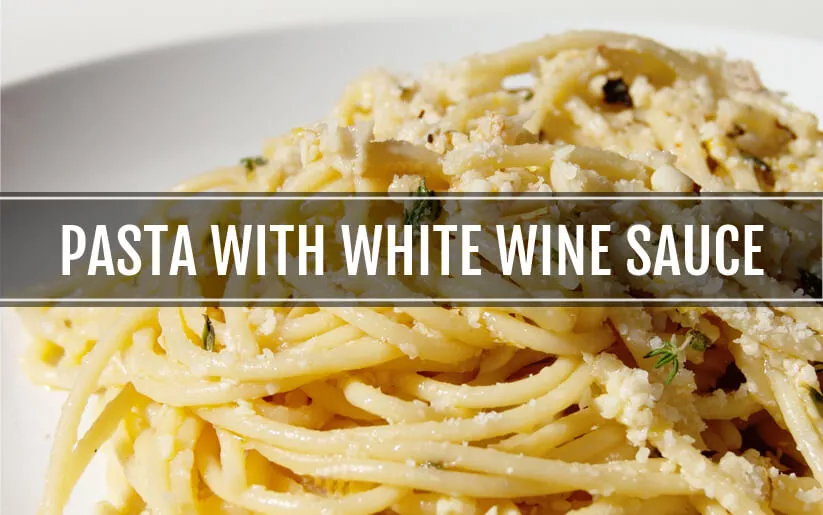Delightful Tangy White Wine Pasta Sauce Recipe: Learn how to make a light and flavorful alternative to traditional pasta sauces. Perfectly complement your favorite pasta with this aromatic sauce.
Pasta has long held a special place in our hearts and on our plates as a beloved comfort food. Whether it’s a hearty bowl of spaghetti or a creamy plate of fettuccine Alfredo, pasta has the power to bring a smile to our faces and satisfy our hunger. While traditional pasta sauces like marinara and Alfredo have their own merits, sometimes it’s exciting to explore new flavors and give our pasta dishes a creative twist.
That’s where the white wine pasta sauce comes in—a light and flavorful alternative that adds a delightful tanginess to your pasta. In this blog post, we will delve into the world of white wine pasta sauce, discovering the ingredients, the cooking process, and ways to enhance your dish. Get ready to tantalize your taste buds and take your pasta experience to new heights with this delightful sauce.
What You’ll Need:
Choosing the Right White Wine:

Chardonnay or Sauvignon Blanc: When it comes to white wine pasta sauce, selecting the right wine is crucial. It’s recommended to use a dry white wine such as Chardonnay or Sauvignon Blanc. These wines have a good balance of acidity and flavor that complements the other ingredients in the sauce.
Other Key Ingredients:
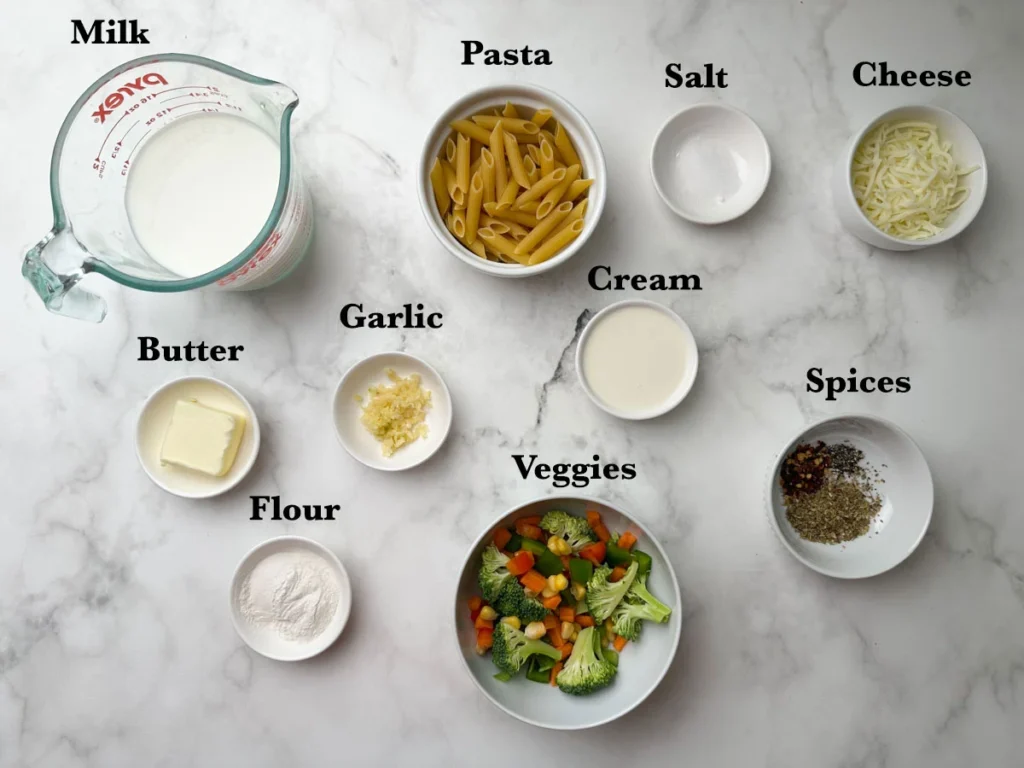
a) Butter: Butter adds richness and a creamy texture to the sauce, enhancing its overall flavor. Look for unsalted butter to have better control over the saltiness of the sauce.
b) Garlic: Garlic is a staple ingredient in many pasta dishes, and it adds a wonderful aroma and depth of flavor to the sauce. Mince the garlic finely to distribute its flavor evenly throughout the sauce.
c) Olive Oil: Olive oil serves as the base for sautéing the garlic and provides a subtle, fruity flavor to the sauce. Extra virgin olive oil is recommended for its superior taste and quality.
d) Chicken or Vegetable Broth: Both chicken and vegetable broth work well in creating a flavorful base for the sauce. The broth adds depth and richness to the sauce, enhancing its overall taste.
e) Heavy Cream: Heavy cream gives the white wine pasta sauce its indulgent and velvety texture. It adds a touch of richness and smoothness to the sauce, making it more satisfying.
How to Make White Wine Pasta Sauce:
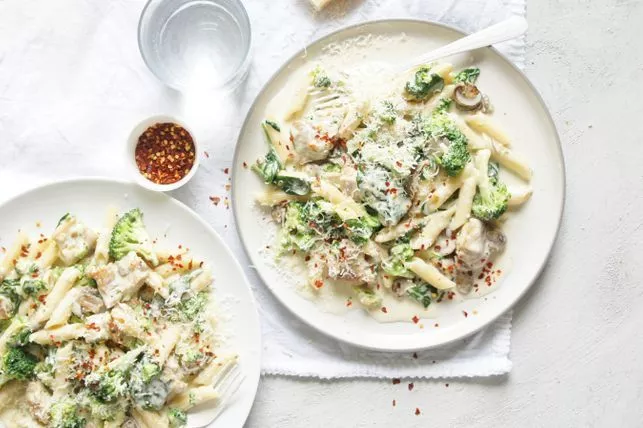
Heat the Skillet: Start by heating a large skillet over medium heat. Add a splash of olive oil and a tablespoon of butter to the skillet. Allow the butter to melt and the oil to heat up.
Sauté the Garlic: Add minced garlic to the skillet and sauté it for a minute or two until it becomes fragrant. Be careful not to let the garlic burn, as it can turn bitter.
Pour in the White Wine: Once the garlic is fragrant, pour in the white wine of your choice. Use about 1 cup of white wine, and let it simmer for a few minutes to allow the alcohol to evaporate and the flavors to meld.
Add the Broth: Next, add 1 cup of chicken or vegetable broth to the skillet. The broth will add depth and enhance the flavors of the sauce. Bring the mixture to a simmer and let it cook for a few more minutes.
Incorporate the Cream: Stir in about 1/2 cup of heavy cream into the skillet. The cream will add a creamy texture and richness to the sauce. Allow the sauce to simmer for a few more minutes until it thickens slightly.
Season to Taste: Taste the sauce and season it with salt and pepper according to your preference. Remember to season sparingly at first, as you can always add more later if needed.
Toss with Pasta: Cook your choice of pasta according to the package instructions until al dente. Drain the pasta, reserving a little bit of the cooking water. Add the cooked pasta to the skillet with the white wine sauce. Use tongs to toss the pasta, ensuring it is well coated with the sauce. If the sauce is too thick, you can add a splash of the reserved pasta cooking water to loosen it up.
Serve and Enjoy: Once the pasta is coated with the sauce, it’s time to serve and enjoy your delicious white wine pasta dish. You can garnish it with freshly grated Parmesan cheese or chopped parsley for an extra touch of flavor.
Putting It All Together:
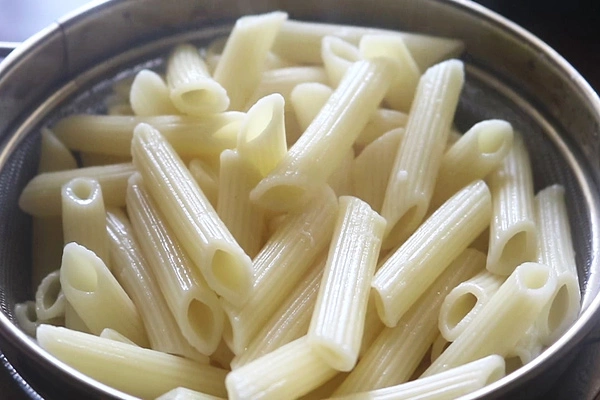
Choose your Favorite Pasta: Start by selecting your favorite type of pasta for this white wine pasta sauce. Linguine, fettuccine, or angel hair pasta work particularly well, but feel free to use any pasta variety you prefer.
Cook the Pasta: Bring a large pot of salted water to a boil. Add the pasta and cook it according to the package instructions until it is al dente. This ensures that the pasta has a slight bite to it and retains its shape and texture.
Prepare the White Wine Pasta Sauce: While the pasta is cooking, you can prepare the white wine pasta sauce. Follow the previous steps mentioned in the recipe to sauté garlic, simmer white wine, add broth, and incorporate cream.
Combine the Pasta and Sauce: Once the pasta is cooked, drain it well and transfer it to a large skillet or pan. Pour the prepared white wine sauce over the pasta, making sure to coat it evenly. Use tongs or a pasta fork to toss the pasta and sauce together, ensuring that every strand is coated in the flavorful sauce.
Enhance the Dish: To further enhance the flavors of your white wine pasta, consider adding some additional ingredients. You can sauté mushrooms, shrimp, or grilled chicken breasts separately and then toss them with the pasta and sauce. They will add an extra layer of taste and texture to the dish. Additionally, you can sprinkle freshly grated Parmesan cheese or chopped parsley on top for added flavor and freshness.
Serve and Enjoy: Once the pasta is well-coated with the white wine sauce and any additional ingredients, it’s time to serve and enjoy your delicious creation. Divide the pasta into serving plates or bowls and garnish with a final sprinkle of Parmesan cheese and parsley. Serve the dish while it’s still hot, and savor the delightful flavors of the white wine pasta sauce.
Enhancing the Dish:
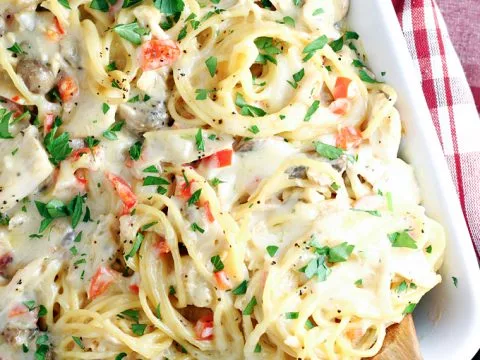
Sauteed Vegetables: Add some sautéed vegetables to your white wine pasta dish for added flavor and texture. Sautéed mushrooms, bell peppers, zucchini, or cherry tomatoes work well. Cook the vegetables separately in a skillet with a little olive oil until they are tender and slightly caramelized. Mix them into the pasta and sauce before serving.
Grilled or Roasted Chicken: For a protein-packed meal, consider adding grilled or roasted chicken to your white wine pasta dish. Season chicken breasts or thighs with salt, pepper, and your choice of herbs or spices. Grill or roast until cooked through, then slice or shred the chicken and toss it with the pasta and sauce.
Seafood Delights: Give your white wine pasta a seafood twist by adding cooked shrimp, scallops, or even chunks of white fish like cod or halibut. To cook the seafood, sauté it in a separate pan with a little olive oil, garlic, and your preferred seasoning until it is opaque and cooked through. Combine the cooked seafood with the pasta and sauce.
Fresh Herbs: Sprinkle freshly chopped herbs like parsley, basil, or thyme over the pasta before serving. These herbs add freshness and a pop of color, enhancing the overall taste of the dish.
Grated Parmesan Cheese: A generous sprinkle of freshly grated Parmesan cheese over the finished dish adds a savory richness and a hint of saltiness. The creamy and nutty flavor of Parmesan complements the white wine pasta sauce perfectly.
Red Pepper Flakes: If you prefer a bit of heat, add a pinch of red pepper flakes to give your white wine pasta sauce a spicy kick. Adjust the amount according to your preferred level of heat.
Serving Suggestions:
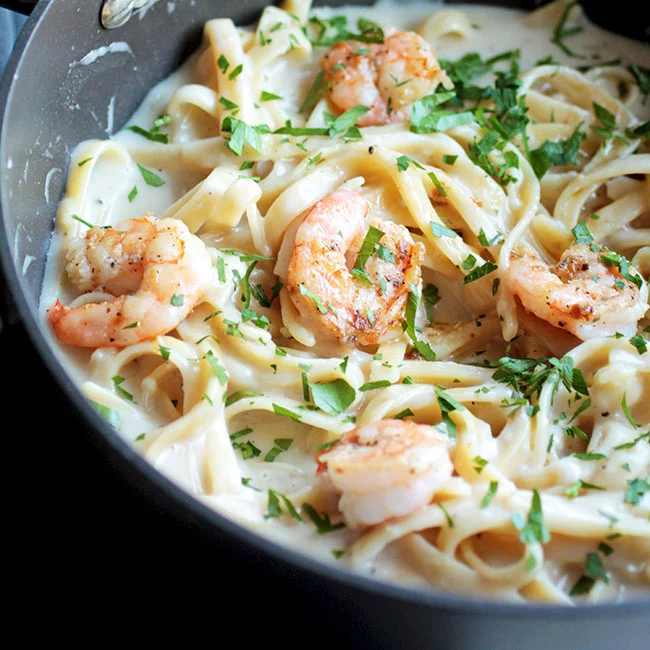
Pair with a Salad: Serve your white wine pasta dish with a side salad to add freshness and balance to the meal. A simple green salad with mixed greens, cherry tomatoes, cucumber slices, and a light vinaigrette dressing works well. The crispness of the salad will complement the richness of the pasta dish.
Crusty Bread or Garlic Bread: Serve some crusty bread or garlic bread alongside your white wine pasta dish. The bread can be used to soak up any extra sauce and adds a satisfying crunch to each bite. You can also toast the bread with garlic and butter for added flavor.
Wine Pairing: Since you’ve used white wine in the sauce, consider serving a glass of the same wine with your meal. The flavors of the wine and the sauce will complement each other perfectly, enhancing the overall dining experience.
Freshly Grated Parmesan Cheese: Offer a small bowl of freshly grated Parmesan cheese on the side, allowing your guests to sprinkle it over their pasta as desired. The sharpness and nutty flavor of the Parmesan complement the flavors of the white wine pasta sauce.
Garnish with Fresh Herbs: Just before serving, garnish the pasta dish with a sprinkle of freshly chopped herbs like parsley, basil, or thyme. The vibrant colors and fragrant scents of the herbs will add a beautiful finishing touch.
Family-Style Serving: Consider serving the white wine pasta dish family-style, placing the large skillet or a serving dish in the center of the table. This encourages a communal dining experience, allowing everyone to help themselves and enjoy the flavors together.
Read More : DELICIOUS DUMPLING SAUCE RECIPE FOR DUMPLING LOVERS
The white wine pasta sauce offers a delightful and flavorful twist to traditional pasta dishes. Its light tanginess, combined with the richness of butter and cream, creates a unique flavor profile that is sure to impress your taste buds. By following the recipe and incorporating the suggested enhancements, you can elevate your pasta experience to new heights.
The versatility of the white wine pasta sauce allows you to customize the dish to suit your preferences. Whether adding sautéed vegetables, grilled or roasted chicken, seafood, or fresh herbs, you can create a pasta dish that reflects your personal taste and brings a burst of flavors to the table.
Proudly powered by Ultimate Blog Hub
